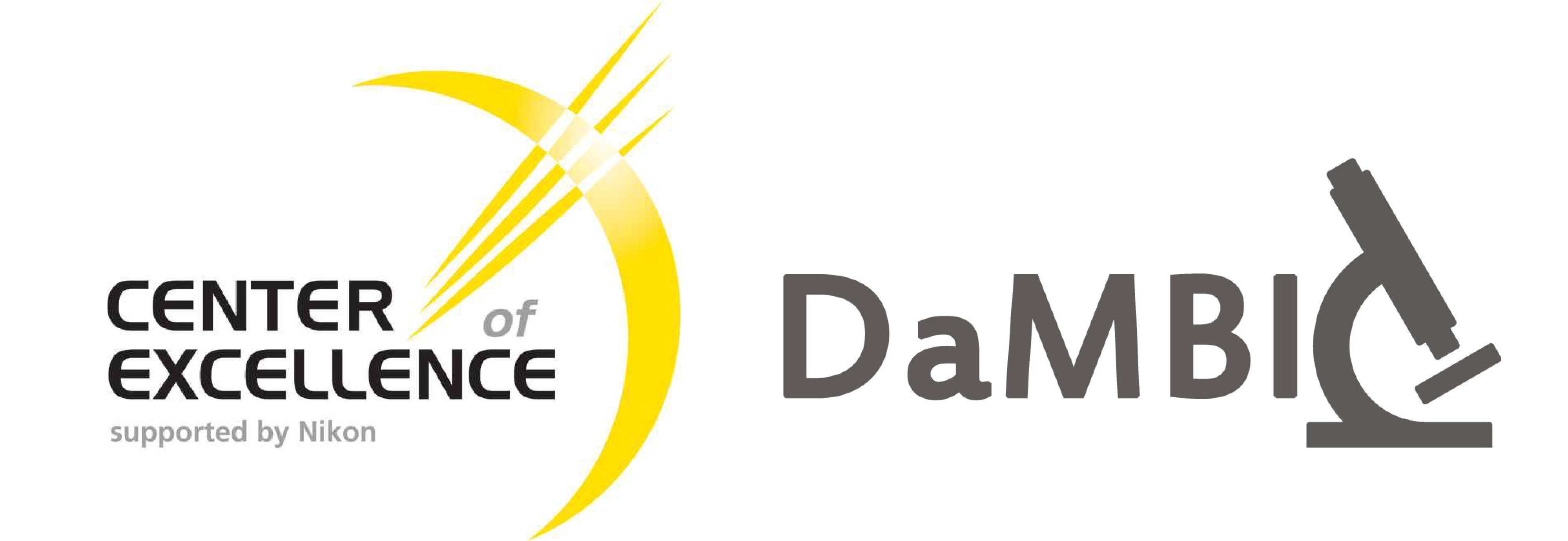Current PhD and Master projects at DaMBIC
PhD Projects
- Brian Bjarke Jensen. "Rational Design of Fluorescent Cellular Probes and Their Characterization by Quantitative Spectroscopy and Imaging". Supervisors Jonathan Brewer and Daniel Wüstner.
- Sofie Marchsteiner Bendixen. ”Molecular Disease Mechanisms of NASH: A Genome-Wide Study of HSCs in Transgenic Mice”. In this project we use genetically modified mice with fluorescent hepatic cell populations to discover novel mechanisms of fibrosis development in non-alcoholic fatty liver disease. Cellular morphology, distribution, and expression of key fibrogenic drivers are visualized using immunofluorescence and genomically encoded fluorescent proteins. In addition, CARS and SHG microscopy is used to monitor the development of hepatic steatosis and scar formation in diet-induced obese mice. Supervisor Kim Ravnskjær.
- Bjarne Thorsted. ”Coherent Raman Scattering Microscopy For in vivo Diagnostics of Head and Neck Cancers”. Demonstrate that Coherent Raman Spectroscopy can be used directly to differentiate the different stages of epithelial tissue, from healthy to invasive carcinoma, and develop a technique for automatic diagnosing using machine learning algorithms. Supervisor Jonathan R. Brewer.
- Zachary Glover. ”Reconstituted versus native casein micelles: Factors affecting structure formation in derived gels and dairy products”. Characterise the microstructure of casein gel networks from fresh milk and compare this to those formed from reconstituted powders. We are using STED microscopy coupled with image analysis to do this. In future, we hope to use Spinning Disc Confocal Microscopy to gain more insight into the initial dynamics of the aggregation processes in different systems. Supervisors Adam Cohen Simonsen and Jonathan Brewer.
- Adrija Kalvisa. ”A genomics approach to identify transcriptional signalling networks regulating hepatic response to feeding”. We identify liver transcription factors that coordinate feeding response and then visualise transcription factor activity via immunofluorescence confocal microscopy. Additionally, we use CARS to assess the histological changes of liver lipid accumulation in response to different diets. Supervisor Lars Grøntved.
- Vibeke Kruse. ”Function of epidermal permeability barrier in whole body physiology”. Supervisor Nils J. Færgeman.
- Kathrine Dall. ”Monitoring metabolic flux during temporal starvation in nematodes by applying stable isotope labeling to high-resolution mass spectrometry”. Supervisor Nils J. Færgeman.
Master Projects
- Nicoline Dorothea Jakobsen. “Epithelial cell renewal” . Supervisor Jonathan R. Brewer.
- Kasper Hauberg Pedersen. "A microscopic study of the transdermal diffusion of water". Supervisor Jonathan R. Brewer.
- Helle Gam-Hadberg. "Epidermal junctional complexes in humans and KrtII-/- mice". Supervisor Jonathan R. Brewer.
- Maximilian Matthies. Studying of human skin layer separation using laser capture microdissection, biomaging and quantitative proteomics of the acquired middle ear disease Cholesteatoma including subsequent comparison of skin layer and Cholesteatoma proteomes. Supervisor Jonathan Brewer.
- Martine Khataei Notabi.”A study of antibody conjugated nanoparticles as a drug delivery system for cancer therapy by active targeting”. Supervisor Eva Arnspang Christensen.
- Rasmus Grønning.”Visualisation of Carbohydrate-responsive element-binding protein (CHREBP) in the pancreatic cell line INS-1E”. Supervisor Daniel Wüstner.
- Marie Karen Tracy Hong Lin. ”Characterization of tight junction proteins and corneodesmosome in artificial skin”. 3D cell culture skin models have become widely accepted as an approach to investigate skin diseases, drug studies analysis or to better understand human skin function. The 3D cell culture skin models are generally used as alternatives to animal testing and research. In this project, the Rat Epidermal Keratinocyte Organotypic Culture (ROC) model is used to investigate tight junction proteins and the corneodesmosome. Confocal fluorescence and Stimulated Emission Depletion (STED) microscopy will be use to visualize the specific proteins labeled using immunocytochemistry techniques. The stratum corneum permeability can also be investigated by using LAURDAN generalized polarization (GP) technique. Supervisor Jonathan Brewer.
- Lisa Skov Baungaard. ”The impact of ACBP on fatty acid elongation in mammalian cells”. Supervisor Nils J. Færgeman.
Bachelor Projects
- Cathrine Høyer. ”Roles of sphingolipids in metabolism and signaling; Regulation of ion channels in mammalian cells”. Supervisor Nils J. Færgeman.
- Anne Navrsgaard Madsen. ”GPR39 gain and loss-of-function during hepatic stellate cell activation”. In this project we study the role and regulation of the 7TM-receptor GPR39 in HSCs during the development of hepatic fibrosis. Expression levels, regulation, and subcellular localization of GPR39 are monitored using immunofluorescence during HSC transdifferentiation to myofibroblasts. Supervisor Kim Ravnskjær.
Individuas Student Activity
- Sonja Simone Hohmann. ”Investigation of fibrosis-associated signaling components in hepatic stellate cells”. In this project we identify signaling pathways involved in hepatic stellate cell (HSC) activation during the development og hepatic fibrosis in mice. Signaling components are traced using immunofluorescence confocal microscopy of liver sections and cultured HSCs. Supervisor Kim Ravnskjær.
